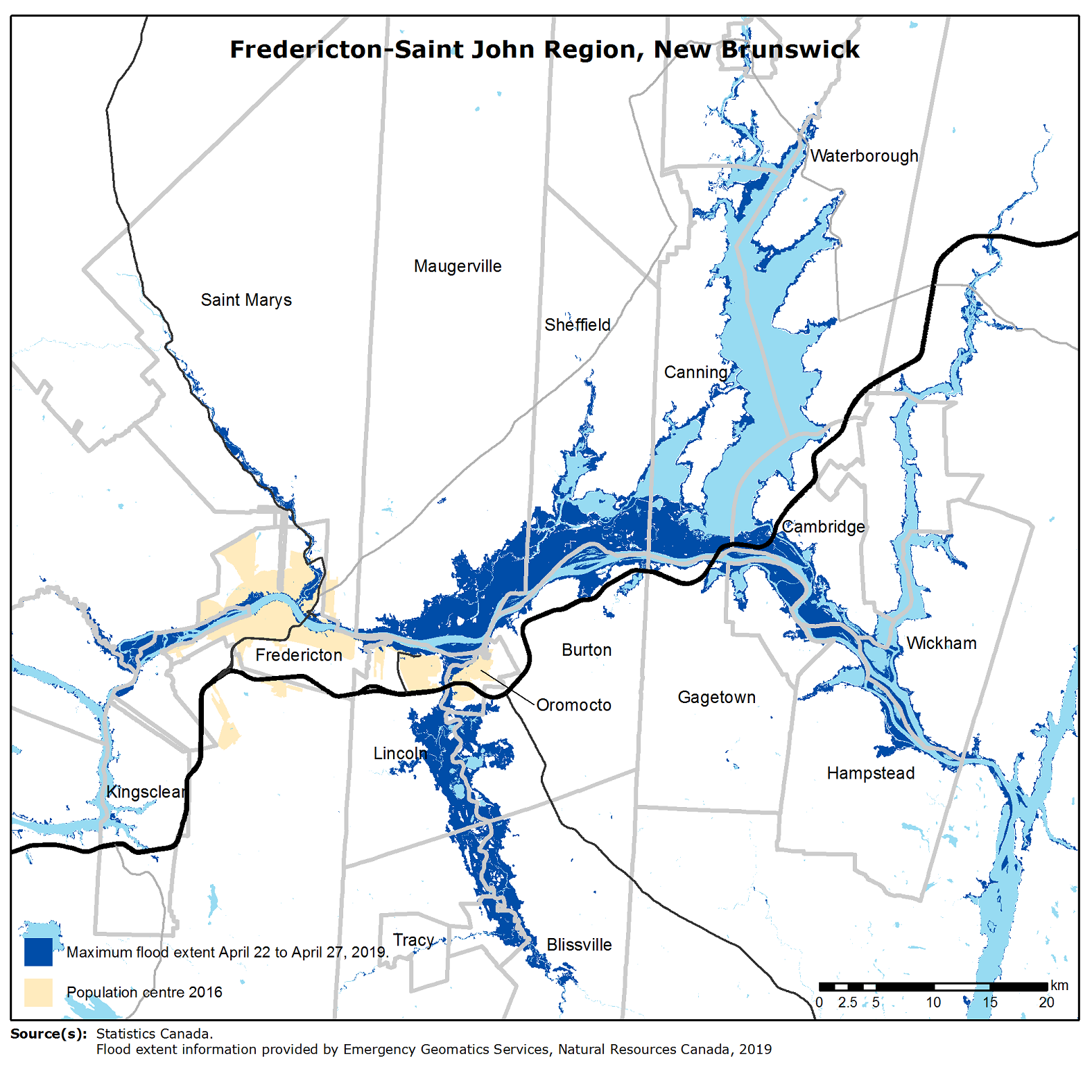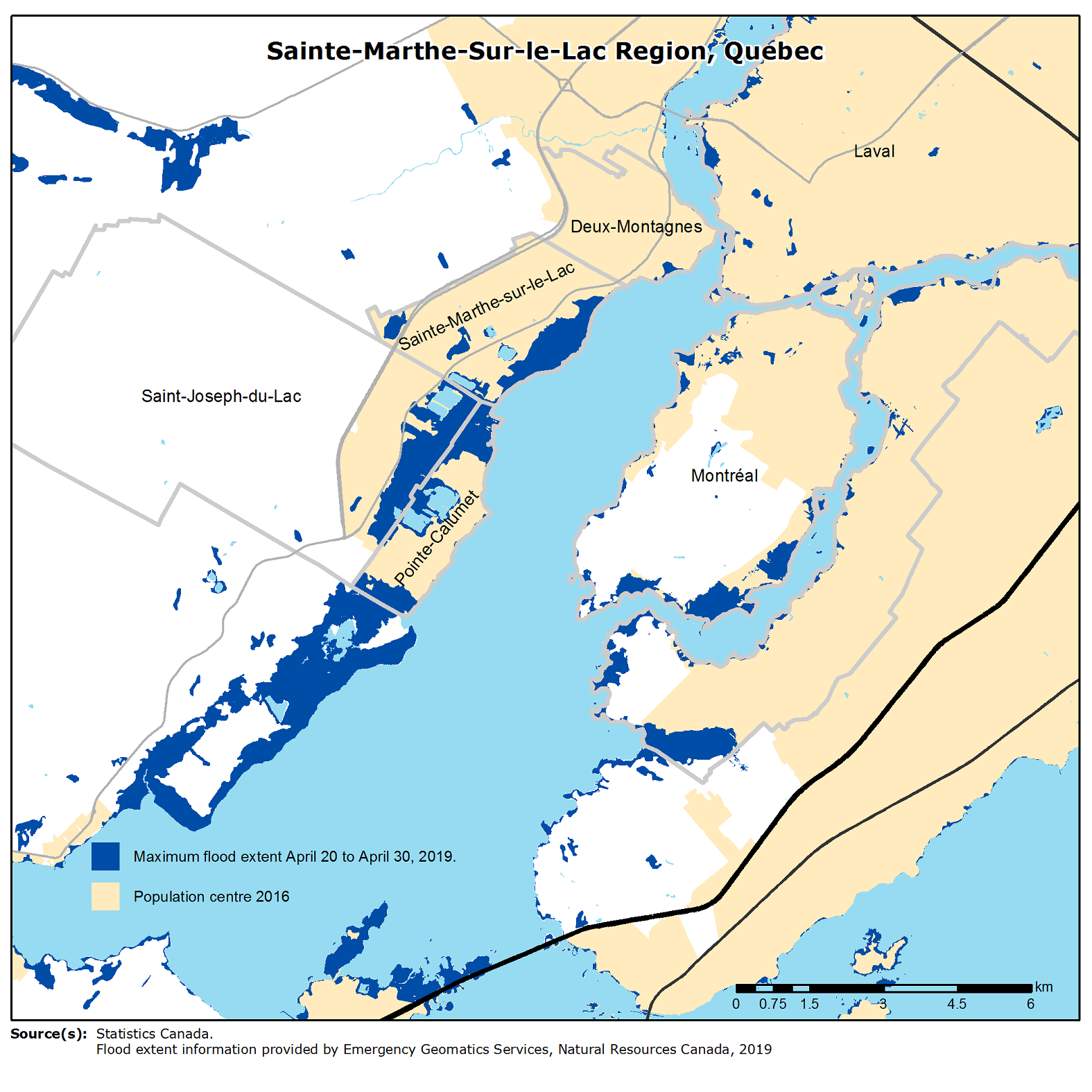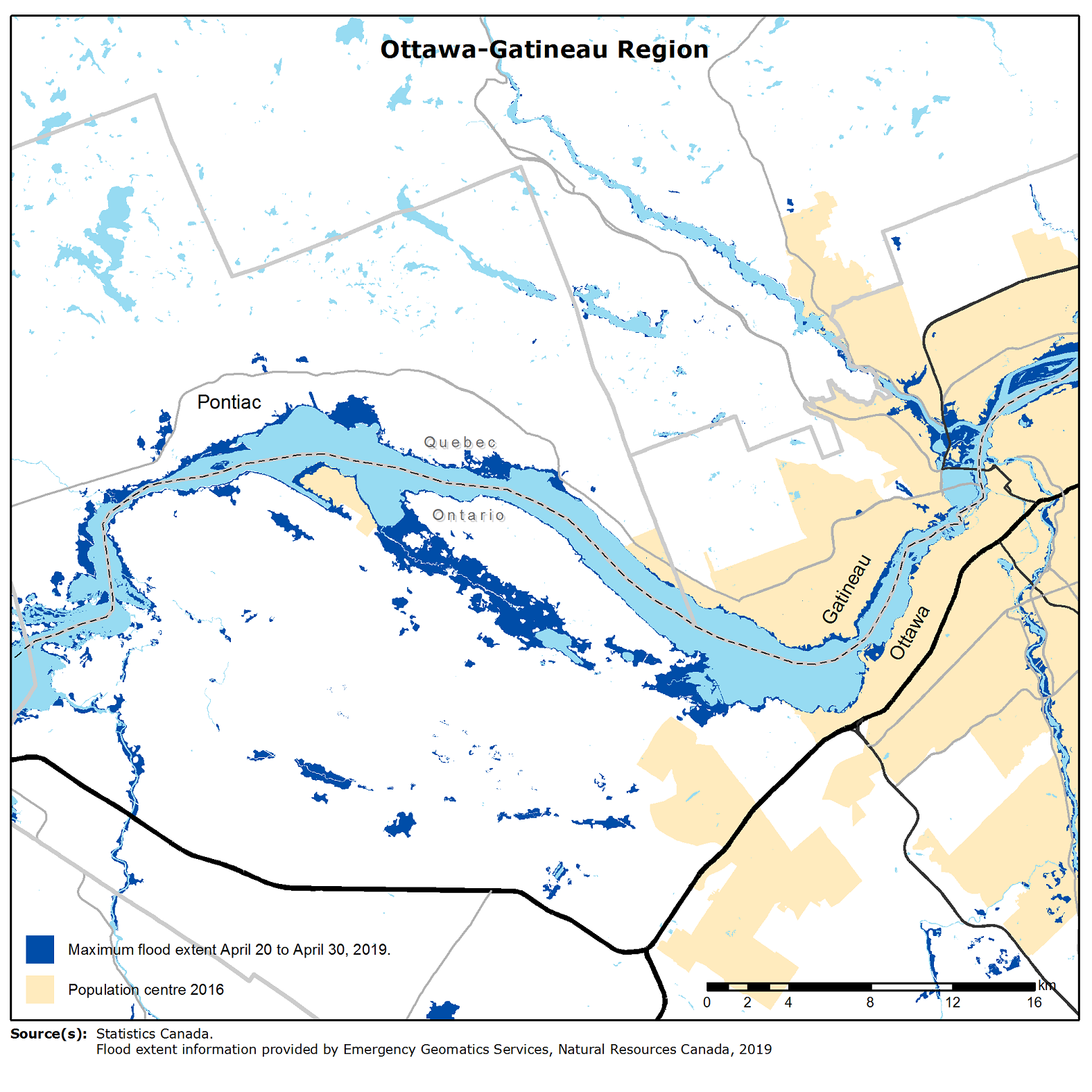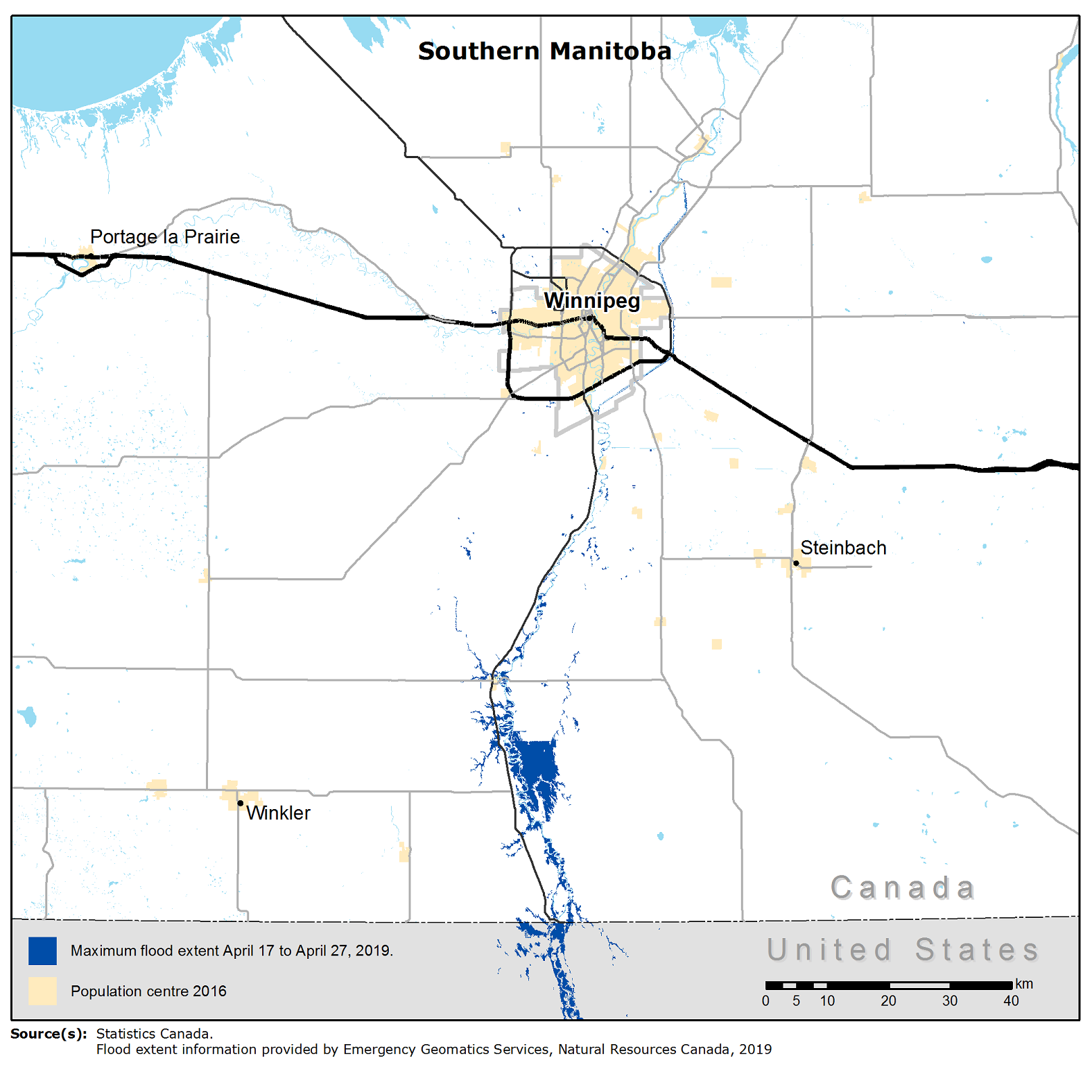Impact of spring flooding in key areas across Canada
Archived Content
Information identified as archived is provided for reference, research or recordkeeping purposes. It is not subject to the Government of Canada Web Standards and has not been altered or updated since it was archived. Please "contact us" to request a format other than those available.
Released: 2019-05-17
Many areas in Eastern Canada reported record snowfall and heavy spring rainfall, which caused increased levels of flooding in some areas.
As part of ongoing efforts to improve emergency management in Canada, Statistics Canada is working with other federal departments to assess and meet the geospatial and statistical information needs for emergency preparedness and response. Statistics Canada plays an important role in providing detailed statistical information in the overall emergency management in Canada.
To better understand the extent of the flooding, Statistics Canada used satellite data from the Canadian Space Agency and Natural Resources Canada from April 17 to 30, 2019, to produce maps showing the major areas affected by surface flooding across the country: Southern Manitoba (Red River Valley); the Ottawa–Gatineau Region (Ottawa River Valley); Sainte-Marthe-sur-le-Lac (West Montréal–St. Lawrence River); and the Fredericton–Saint John New Brunswick Region (Saint John River).
Analysis based on early estimates shows about 17,500 dwellings were either affected or at risk of flooding in these areas. This estimate is likely to change in the coming months, as property owners in the affected areas submit insurance claims.
Satellites detected more than 600 square kilometres of flooded land, with eastern regions of Canada most affected. Flooded areas included 153 square kilometres of agricultural land where flooding may delay spring seeding or the loss of productive land for the 2019 growing season.
About 460 kilometres of road network was either affected by or at risk of flooding in these areas. Roads were washed out in some areas by fast moving water.
Municipalities affected by flooding
Determining the severity of the spring flooding at the municipality level can help identify where to concentrate relief efforts and to establish funds to help those affected by the flooding and repair damaged infrastructure.
Some municipalities within flooded regions were more affected than others, and extensive losses within these municipalities are likely to have a significant impact on their local governments. Pontiac and Sainte-Marthe-sur-le-Lac, in Quebec, were among the hardest hit, where more than 20% of dwellings were affected by flooding or were at risk of flooding.
As more information becomes available, Statistics Canada will provide additional reports on the extent and impact of the spring floods.
Note to readers
Statistics Canada used the boundaries of flooded areas identified through satellite data to extract a selection of relevant data from its system of statistical registers and from linked ancillary databases to produce the summary data presented in this analysis.
Contact information
For more information, or to enquire about the concepts, methods or data quality of this release, contact us (toll-free 1-800-263-1136; 514-283-8300; STATCAN.infostats-infostats.STATCAN@canada.ca) or Media Relations (613-951-4636; STATCAN.mediahotline-ligneinfomedias.STATCAN@canada.ca).
- Date modified:





